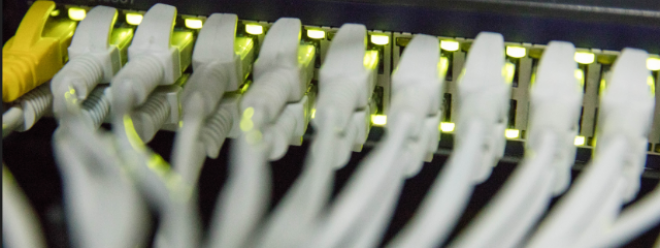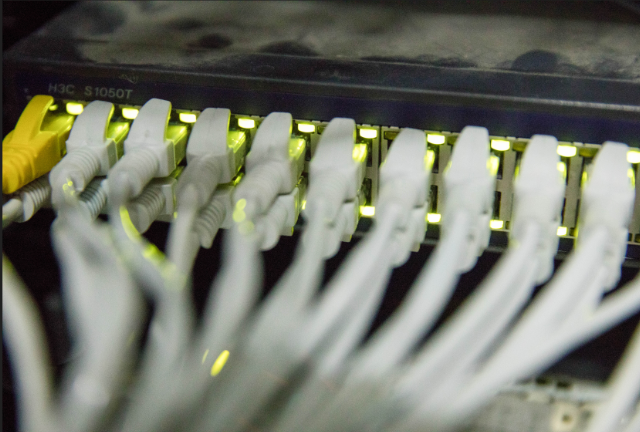The Importance of Ethernet Cabling for High-Speed Internet in the Home

The Importance of Ethernet Cabling for High-Speed Internet in the Home

In today's digital age, having a reliable and high-speed internet connection at home is essential. Whether watching movies online, playing online games or working from home, a strong internet connection ensures a smooth, uninterrupted experience. While Wi-Fi has become the A go-to choice for many homes, it might not always be ideal for bandwidth-intensive activities. This is where Ethernet cabling comes into play, providing a reliable and efficient solution for high-speed internet connections.
Understanding Ethernet Cabling
Ethernet cabling refers to the physical cables and connectors used to establish wired network connections between devices. It is a standard technology for local area networks (LANs) that allows seamless communication between devices. Unlike Wi-Fi, which relies on wireless signals, Ethernet uses physical cables to transmit data, resulting in a more stable and faster connection.
Benefits of Using Ethernet Cabling for High-Speed Internet
- Reliability: Ethernet cabling provides a stable and reliable connection compared to Wi-Fi, which may experience interference from other devices or walls. With Ethernet, you can enjoy consistent internet speeds without interruption.
- Faster Speeds: Ethernet offers faster speeds than Wi-Fi, especially when transferring large files or streaming high-definition video. It provides a dedicated connection between devices, ensuring optimal performance.
- Low Latency: For gamers or anyone who needs low latency, Ethernet is the go-to. It minimizes the latency of data transmission, resulting in a more responsive and lag-free gaming experience.
- Security: Ethernet connections are more secure than Wi-Fi because they are less vulnerable to hacking or unauthorized access from outside your home. This makes Ethernet a solid choice for sensitive tasks like online banking or file sharing.
How does Ethernet enable devices to communicate over a local area network?
Ethernet enables devices to communicate over a local area network (LAN) by providing a standardized method of transmitting data packets between devices connected to the network.
Here's how Ethernet facilitates communication within a LAN:
- Physical connection: Ethernet requires a physical connection between devices via Ethernet cables. Each device is equipped with an Ethernet port as an interface for connecting cables.
- Data transmission: When a device wants to send data to another device in the LAN, it encapsulates the data into packets. These packets contain information such as source and destination addresses, as well as the actual data being transferred.
- Ethernet Frame: Packets are further encapsulated into Ethernet frames, which include additional information needed to transmit data over Ethernet. This includes the Media Access Control (MAC) address, which uniquely identifies each device connected to the LAN.
- MAC address resolution: Before sending an Ethernet frame, the source device needs to determine the MAC address of the destination device. It does this by using Address Resolution Protocol (ARP) or a similar mechanism. ARP allows devices to map IP addresses to corresp onding MAC addresses on the LAN.
- Switching and Forwarding: Once the MAC address of the destination device is known, the source device sends the Ethernet frame to the LAN. Ethernet switches play a vital role in forwarding frames to the correct destination. The switch examines the MAC address within the frame and maintains a table associating the MAC address with the corresponding switch port.
- Broadcast and Multicast: Ethernet also supports broadcast and multicast communications within a LAN. Broadcast frames are sent to all devices on the network, while multicast frames are sent to a specific group of devices that are interested in receiving the data. This enables efficient communication in Scenarios where data needs to be propagated to multiple devices simultaneously.
- Reception and processing: When a target device receives an Ethernet frame, it checks the MAC address to determine if it is the intended recipient. If the MAC addresses match, the device processes the frame, extracts the packet, and takes appropriate action based on the contents of the packet.
- Response and feedback: Devices in the LAN can communicate by sending and receiving data packets through the Ethernet protocol. This enables interactive communication such as requesting and receiving information, file sharing or real-time collaboration.
Which network ethernet cable should we choose for home ethernet cabling?
There are several factors to consider when choosing the right network Ethernet cable for your home.
Typically the following options are used:
- Cat5e cables: Cat5e cables are suitable for most home networks, providing speeds up to 1 Gbps per second). They are cost-effective and can handle most internet activities without any problem.
- Cat6 Cable: Cat6 cable is an upgrade from Cat5e, offering faster speeds up to 10 Gbps. They're perfect for bandwidth-intensive activities like 4K streaming or online gaming.
- Cat6a Cable: Cat6a cable is designed for high-performance networking, supporting speeds up to 10 Gbps over longer distances. They provide better shielding against interference, making them ideal for professional settings.
When choosing an Ethernet cable, consider the required length of your home network wiring. Measure the distance between devices and choose a cable length that allows for proper installation without excessive slack.
How do I set up an ethernet connection at home?
Setting up an Ethernet connection at home requires some basic tools and the following steps:
Tools needed for home ethernet cabling:
- Ethernet cable (Cat5e, Cat6, or Cat6a)
- Ethernet wall jack
- Wire strippers or scissors
- Crimp tool or Ethernet connector plug
- screwdriver
How to create a wired ethernet network?
To create a wired Ethernet network in your home, you can follow these steps:
- Plan your network: Determine your network layout and where you want to make Ethernet connections. Consider how many devices will need to be connected and where the Ethernet wall jack will be installed.
- Gather the necessary equipment: Before starting the installation process, make sure you have all the required tools and equipment. You will need an Ethernet cable (such as Cat5e, Cat6, or Cat6a), an Ethernet wall jack, wire strippers or scissors, a crimping tool or Ethernet connector plug, and a screwdriver.
- Install Ethernet Wall Jack: Choose where you want the Ethernet connection and install the Ethernet wall jack accordingly. Follow the manufacturer's instructions for proper installation. Typically, you'll need to cut a hole in the wall, plug it into the ethernet wall jack, and hold it in place.
- Run Ethernet cables: From each wall Ethernet jack, run Ethernet cables to a central location where the modem or router is located. Plan your route carefully, taking into account any obstructions or obstructions on walls or floors. It may be necessary to drill small ho les or use cable clamps to secure the cables.
- Secure the ethernet cables: Once the ethernet cables run to the central location, you will need to secure them. Use wire strippers or scissors to strip the outer jacket of each cable, exposing the individual wires inside. Follow the T568B or T568A wiring standards to arrange the wires in the correct order. Insert the wires into the ethernet connector plugs and use a crimping tool to hold them in place.
- Connect the Ethernet cables: Connect one end of each Ethernet cable to the Ethernet wall jack in its respective location. Connect the other end of each cable to the corresponding port on your modem or router. Make sure the connection is secure.
- Test Network: After all connections are established, test the network to make sure everything is working. Connect the devices to the ethernet wall jack and check if they can access the internet or communicate with each other. If you have any problems, double check your connections and consult the documentation for your network equipment.
How does ethernet work in the home?
Ethernet works in homes by using Ethernet cables to create wired network connections between devices. Here's how it works:
- Ethernet Cable: An Ethernet cable is the physical medium used to transfer data between devices. These cables consist of several pairs of twisted copper wires designed to minimize interference and ensure reliable data transmission.
- Ethernet switch port: Devices that support Ethernet connections, such as computers, game consoles, or smart TVs, are equipped with Ethernet ports. These ports provide an interface for connecting Ethernet cables.
- Modem or Router: In a home network setup, the Ethernet cable connects to the modem or router. The modem is responsible for receiving Internet signals from your Internet Service Provider (ISP) and converting them into a form that your device can understand. Routers, On the other hand, allow multiple devices to share an Internet connection and provide additional features such as network security and Wi-Fi connectivity.
in conclusion
In summary, Ethernet cabling plays a vital role in enabling high-speed internet connections in the home. It provides a reliable, fast and secure connection, making it suitable for a variety of activities including streaming, gaming and working from home. By understanding Ethernet , Cat 5 and Cat 6, the benefits of Ethernet cables, choosing the right cable, and following the proper installation process, you can enhance your home network and enjoy a seamless online experience.
common problem
- Can I use Wi-Fi and Ethernet at the same time?
Yes, you can use Wi-Fi and Ethernet connections simultaneously. This allows you to connect multiple devices to the internet using either option. - Is Ethernet faster than Wi-Fi?
Yes, Ethernet is generally faster than Wi-Fi due to its wired nature. It provides a more direct and dedicated connection between devices, resulting in faster speeds and lower latency. - Can I use any ethernet cable for my home network wiring?
While any ethernet cable can technically be used for home network wiring, it is recommended to use a cable that meets the standards required for the desired internet speed, such as Cat5e, Cat6, or Cat6a. - How long can an Ethernet cable be?
The maximum recommended length of the Ethernet cable is 100 meters (328 feet). Beyond this length, signal attenuation may occur, affecting performance. - Can I install the Ethernet cabling myself?
Yes, with the right tools and knowledge, you can install Ethernet cabling yourself. However, if you are not familiar with the process, it is recommended to seek professional help to ensure proper and reliable installation.